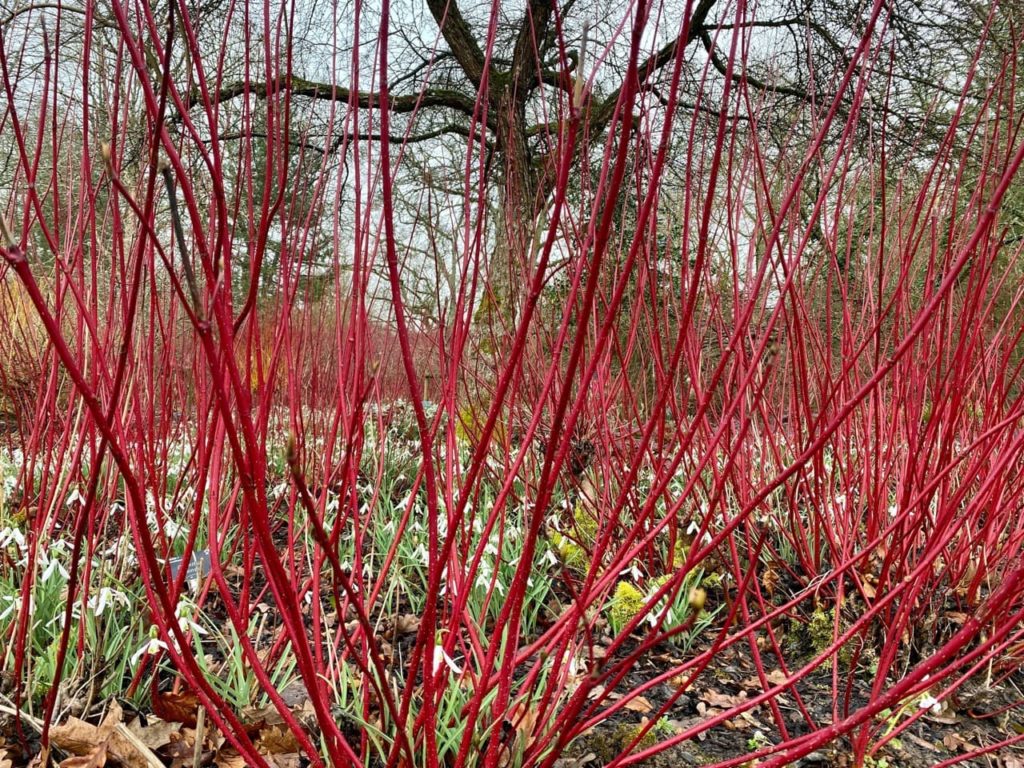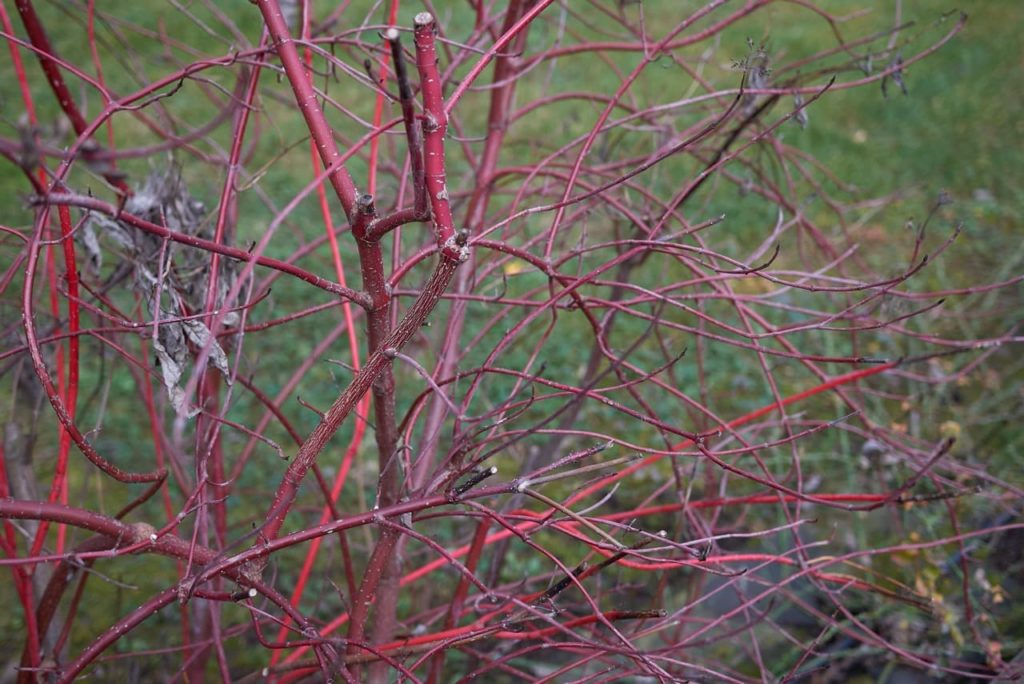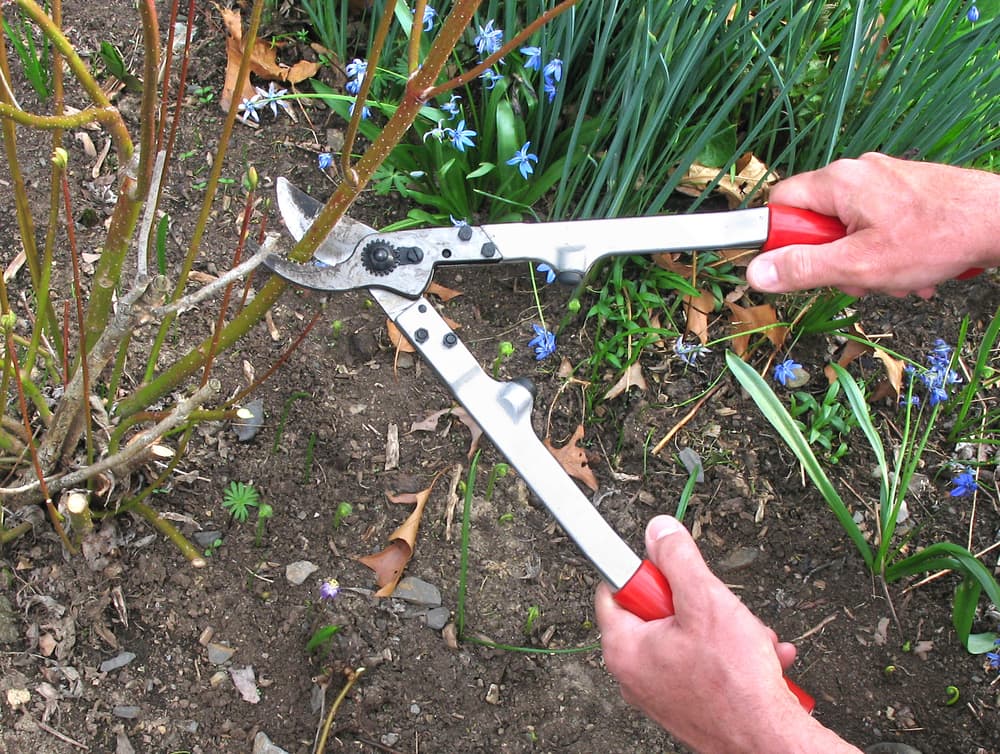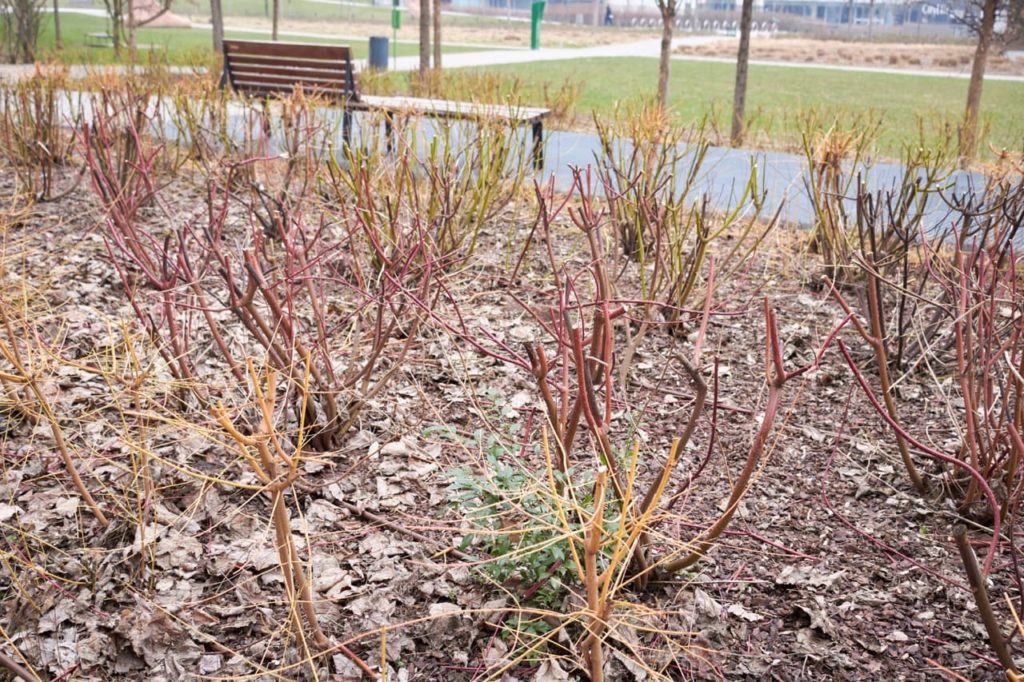Pruning Dogwood Can Help Maximise The Ornamental Appeal Of Their Colourful Stems

Reviewed By PETER LICKORISH

Peter is a Horticulture Lecturer and self-employed Horticulturist, with a passion for diverse areas of the industry - from garden design to the science behind plant growth and propagation. He has completed the Royal Horticultural Society’s Master of Horticulture (MHort) Award and lectures on RHS courses at Bedford College.
DOGWOOD GUIDES
Dogwood shrubs, not to be mixed up with dogwood trees, are unusual and extremely interesting plants with a very special twist.
Though the vast majority of their varieties display variegated or wonderfully coloured foliage, produce an abundance of tiny flowers and even bear little berries, they are valued most for their technicolour stems.
It is because of these stems that these fully hardy deciduous shrubs provide winter colour you can enjoy the sight of a decorative latticework of crimson or golden stems breaking the monotony of the grey sky above and the white snow beneath.

It must be said that you don’t need to prune a dogwood shrub.
However, pruning is highly desirable and can help to maximise the shrub’s ornamental appeal, including the stems’ brilliant colourings.
Underneath we guide you on the whys, whens, and hows on pruning dogwood shrubs.
| Difficulty | Medium |
| Equipment Required | Gardening gloves, secateurs or pruning shears, occasionally a pruning saw |
| When To Prune | February is best, though anytime during winter dormancy will suffice |
Why Prune Dogwood?
Dogwood shrubs, like many members of the plant kingdom, respond to pruning with a burst of fresh growth.
The most richly-coloured stems on a dogwood shrub are the young growth and the greyest, dullest ones are the oldest.
This is one reason that pruning can be beneficial for these shrubs, as you can get rid of the least colourful and ornamental stems and replace them with new brightly-coloured ones.

These shrubs can also become straggly and unkempt or look unbalanced as a result of uneven growth or a poor pruning job last time around.
A proper trim will improve the aesthetics of a dogwood shrub by restoring size, shape and balance.
Another reason to prune arises when dense, overlapping growth causes these shrubs to become congested.
Pruning unwanted stems to reduce congestion and open up the shrub is another way to restore or enhance its ornamental appeal.
When To Prune Dogwood
Instead of waiting until your dogwood shrub needs pruning, best practice suggests that you give it an annual prune.
This can be done anytime during winter dormancy, but the ideal timeframe is late February, as this will allow you to enjoy the sight of those colourful stems during the winter.

Annual maintenance pruning should not be done when the shrub is in its first year, so only prune from the second year onwards.
Similarly, a hard prune or cutback should not be attempted when the shrub is one or two years old – you may do so only after it is three years old or more.
The Pruning Process
Use a pair of sharp secateurs and sterilise the blades with diluted rubbing alcohol or diluted bleach before using.
Prune down to the ground any stems that are dead, diseased or growing at a sharp angle.
Select the weaker of any which rub together, and remove these too.
Also, cut down stems that are old.
They will be greyish and will display a rough texture.
“You can cut the oldest stems, where the colour is confined to the very tips, back to a pair of buds between ground level and a height of around 40cm,” explains Master Horticulturist Colin Skelly.

Finally, judiciously prune the remaining stems – those with stronger colour – for length and shape so as to attain a balanced and symmetric form.
Generally, these stems should be trimmed by about one-half of their lengths.
Thin, wispy stems can be cut back harder.
Feel free to prune some stems down to about 10cm.
The fresh growth this pruning will stimulate will result in a profusion of very brightly-coloured stems.
Hard Pruning Dogwood
If your dogwood shrub is congested and overgrown, you can reboot it with a hard prune.
To do so, cut back all the stems on the shrub to about 10cm above the ground.

Aim to make the cut just above the first or second leaf node.
Cut each stem with a pair of sterilised secateurs or pruning shears, loppers or a pruning saw. If using a pruning saw, make a small incision on one side, and then cut across from the other side to meet this. This helps prevent snagging and tearing of stems.
Again, the right time is during winter dormancy.
Yes, it will be a time-consuming chore, but consider it a labour of love.
You will surely reap a brilliantly-coloured reward!
“I think dogwoods look best en masse, in large drifts or clumps, if you have the space,” says Peter.
“To add interest and a tiered effect, you could cut some back so their colourful branches start around 40cm or 20cm from the ground, and others so they branch from the ground.
“Cutting higher may allow you to plant bulbs or ground cover underneath.”

After such a cutback, feed the shrub with a balanced formula when fresh growth is emerging in spring.

